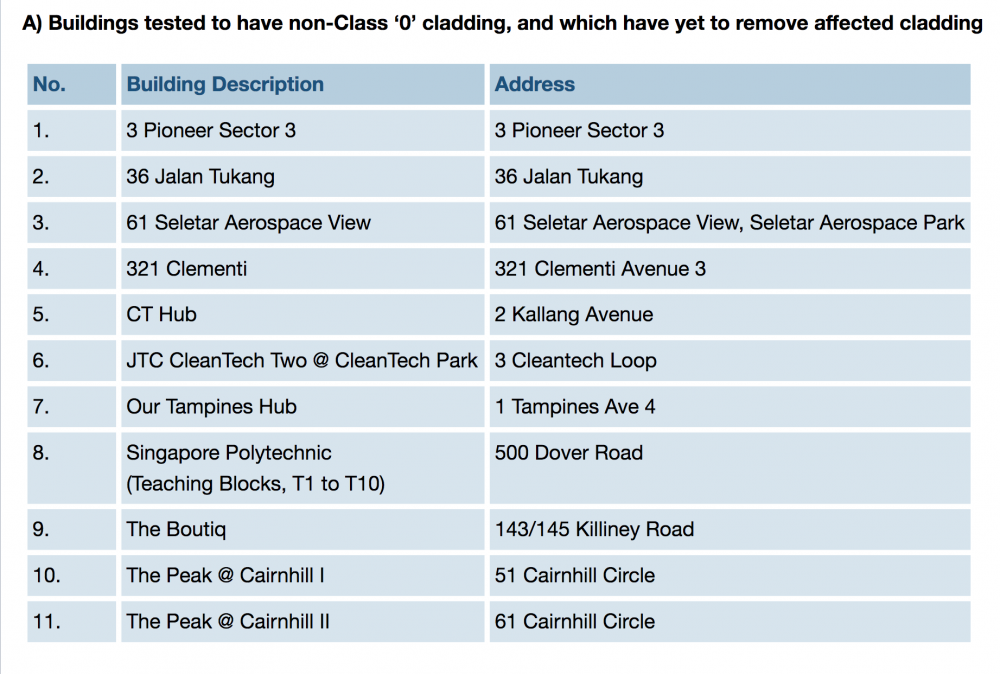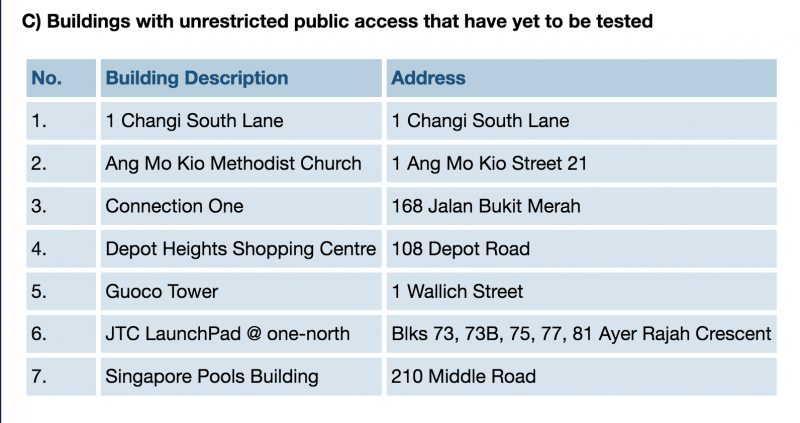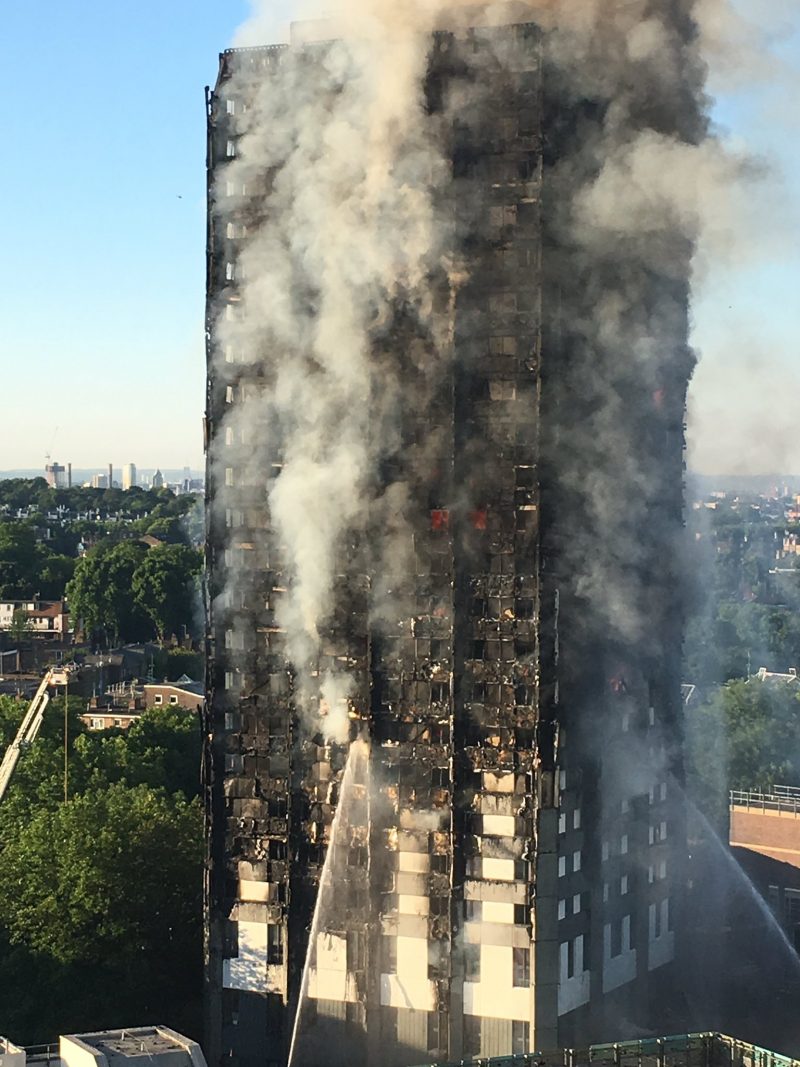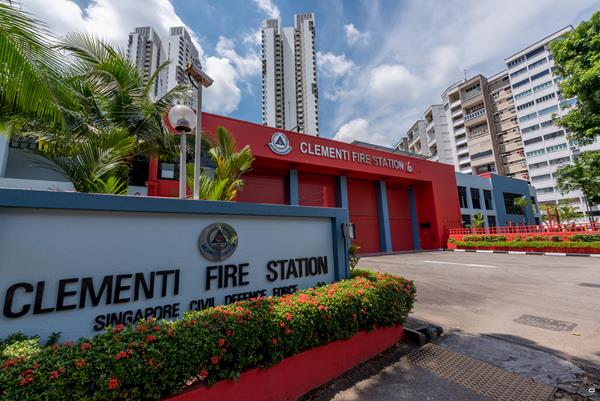The Singapore Civil Defence Force (SCDF) announced on Aug. 24, that 36 buildings in Singapore may be covered in external cladding that do not meet standards in the Fire Code.
These buildings include the Clementi Fire Station, a couple of McDonalds, Our Tampines Hub, and Singapore Polytechnic.
However, the fire station and the McD's have already removed the cladding in question.
You can check out the full list of buildings below, and at the SCDF's website.
 Photo via the SCDF website.
Photo via the SCDF website.
 Photo via the SCDF website.
Photo via the SCDF website.
 Photo via the SCDF website.
Photo via the SCDF website.
What does "cladding" even mean?
Cladding refers to materials applied over walls to form a "skin" or an external layer. It's done for heat insulation, and also to make the building look nice.
However, it's vulnerable to fires in two ways.
Firstly, there's a gap between the cladding material and the wall. If a fire breaks out, this gap draws hot air up like a chimney, intensifying the fire and spreading it to the top of the clad area.
Second, the cladding material itself could be combustible. In such cases, fire could be spread directly by the cladding material itself.
You might remember the tragic Grenfell Tower fire that occurred in London on June 14 earlier this year, where over 80 people died and more than 200 were left homeless. It's believed that the cladding used in the building's construction contributed to the intensity of the blaze. A public inquiry will be held on the incident.
 Photo via Wikipedia.
Photo via Wikipedia.
Decoding the Fire Code
The SCDF have divided cladding materials into five different classes: Combustible Class 0 to 4. Class 0 refers to materials that won't have fire spread along its surface even when ignited. Class 1 materials, however, will have a "very low" rate of fire spread.
[related_story]
The buildings in the list were found to have cladding materials that were not Class 0. However, according to the SCDF, comprehensive fire safety assessments have been carried out and the buildings are still safe.
"In its assessments, the SCDF examined various factors including the proximity of the cladding to possible ignition sources, occupied spaces and escape routes, the proportion of the external walls covered with cladding, and the availability of fire protection systems such as fire hose reels, sprinklers and fire alarms."
According to SCDF's Director of Fire Safety and Shelter Department Christopher Tan:
"So, with this assessment, we want to assure the public that the buildings are safe for occupancy."
Investigations
Investigations into cladding were conducted by both the SCDF and the Singapore Police Force following a blaze that broke out at 30 Toh Guan Road on May 4, 2017. According to the SCDF, the fire was confined to the external facade of the building. One woman, Madam Neo Siew Eng, 54, died of injuries sustained in the fire.
Investigations later revealed that the affected buildings -- including Toh Guan -- used the Alubond brand composite panels for their cladding. Apparently, different Class 0 and Class 1 models of the panels were mixed up at the Singapore distributor's warehouse and both models were used in the external walls of those buildings.The distributor, Chip Soon Aluminium, has stopped supplying the panels to building projects and are cooperating with the authorities in their investigations.
If you're a building owner or a Qualified Person who used Alubond composite panels in the construction of your building, please contact the SCDF at this email address: [email protected]
Only you can prevent building fires.
Related stories:
Famous Nasi Lemak stall in Changi Village catches fire, to be closed for 2 days
Almost 70-year-old Afro-Asia Building to be demolished. A woman died there in a fire in 2011.
Here are some totally unrelated but equally interesting stories:
In defense of millennials: NYC survey shows they may be the best yet
Working person, this is the secret to how you can realistically prepare for retirement
6 signs you were born to be an engineer
Top image via Singapore Memory.
If you like what you read, follow us on Facebook, Instagram, Twitter and Telegram to get the latest updates.


